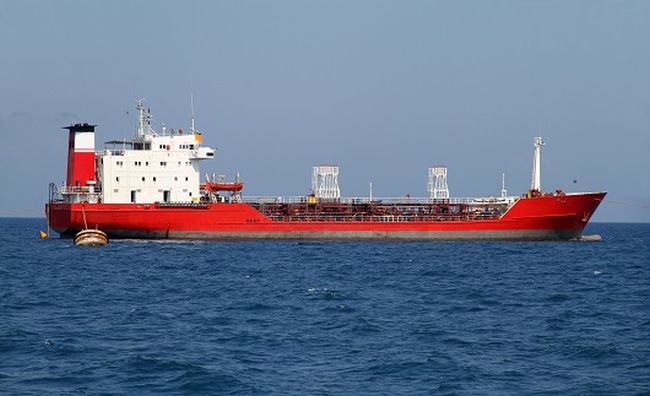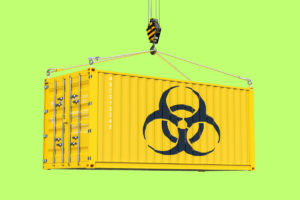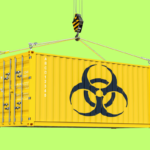What is HNS Convention for Shipping?
The HNS Convention is an acronym for the IMO’s International Convention on Liability and Compensation for Damage in Connection with the Carriage of Hazardous and Noxious Substances by Sea. The convention’s stipulations were formally put forth in the year 1996. However the idea for enacting an appropriate legislature to protect the interests of all parties that could be potentially damaged by such hazardous materials was laid out as early as in the late 1960s.
The delay between the intended legislature and its draft stipulations were caused by various problems and technical issues. However, even though the necessary stipulations were categorically put forth, the actual writ protocol on the HNS Convention that was implemented only in the year 2010 were several modifications to 1996 stipulations. Although the shipping convention is still yet to be implemented, it has emerged as one of IMO’s most powerful tools to ensure maritime safety and security.

In order to provide maximum security cover to any party that could encounter damages, the IMO has laid out quite encompassing rules and requirements. Many of these rules and regulations are based on two of IMO’s most important Conventions – the CLC (International Convention on Civil Liability for Oil Pollution Damage) and the International Convention on the Establishment of an International Fund for Compensation for Oil Pollution Damage. Although these two conventions have been highly instrumental in providing a base for the HNS Convention, the shipping convention offers its individualistic singularity to the overall maritime operations.
HNS Convention: Scope and Coverage
Any substance that is inflammable, volatile and noxious, extremely susceptible to erosion or any kind of reaction is categorised as being hazardous. Such hazardous substances thus include bulk cargo, gases, liquid (chemicals) and even packed cargoes. However the shipping convention does not include any hazardous substances already included in the IMO’s IMDG regulations.
The HNS Convention comes into place once the vessel has been loaded with the designated cargo and is dispatched for its intended destination. In case of any accidents or mishaps occurring while the vessel is at sea resulting in maritime contamination, the country whose waters have been affected has occurred stands to get the necessary monetary compensation. The terms and conditions about the compensatory policies of the convention can be further pinpointed as follows:
- Two-level compensatory system identifying both the vessel owner/operator and the receiving party of the hazardous substances as principal compensatory contributors
- Mandatory insurance policy required to be produced by vessel owners of all countries which are a part of the shipping convention
- The first level of compensatory contribution is required to be borne by the vessel owner to the extent of US$ 175 million
- The second level of compensatory contribution is required by the receiving party of the shipped cargo to the extent of US$ 375 million
- The second level of compensation will be offered to the claimants to the extent of the amount not compensated by the first level of compensatory allowance
In case of accidents and resultant contamination occurring because of wartime crises or natural calamities or destruction of the cargo by third-parties, both the vessel owner and the receiver of the said cargo are exempted from providing monetary compensation. Additionally, the vessel’s crew personnel, its captain and all parties functioning as intermediaries in the shipping operation are also exempted from being liable in case of any accidents occurring.
Present-day Status Quo of the HNS Convention
The HNS Convention has still not been formally implemented as several countries in the world are yet to ratify it. As per the rules of ratification, the convention will formally enter into force one-and-a-half years post the signature of 12 countries signing the ratification agreement. Even amongst these signatories, there have to be:
- Four member countries which have a vessel tonnage of two million gross tons
- Four member countries which have recorded shipping activities of 40 million tons of such aforementioned hazardous substances in the year immediately preceding their ratification
Presently Canada, Turkey, Netherlands, Denmark, Greece, France, Germany and Norway are the eight countries that have ratified the HNS Convention.
References: hnsconvention, imo
Do you have info to share with us ? Suggest a correction
About Author
Marine Insight News Network is a premier source for up-to-date, comprehensive, and insightful coverage of the maritime industry. Dedicated to offering the latest news, trends, and analyses in shipping, marine technology, regulations, and global maritime affairs, Marine Insight News Network prides itself on delivering accurate, engaging, and relevant information.

About Author
Marine Insight News Network is a premier source for up-to-date, comprehensive, and insightful coverage of the maritime industry. Dedicated to offering the latest news, trends, and analyses in shipping, marine technology, regulations, and global maritime affairs, Marine Insight News Network prides itself on delivering accurate, engaging, and relevant information.
Latest Maritime law Articles You Would Like:
Latest News
- What are Logistics Risks?
- How Port and Terminal Operators Can Control Emissions?
- Minimum Quantity Commitment (MQC) and Liquidated Damages in Container Shipping: Concept and Relevance
- MARPOL (The International Convention for Prevention of Marine Pollution For Ships): The Ultimate Guide
- The Ultimate Shipping Container Dimensions Guide
- A Comprehensive Overview of IMDG Code for Shipping Dangerous Goods
Subscribe To Our Newsletters
By subscribing, you agree to our Privacy Policy and may receive occasional deal communications; you can unsubscribe anytime.
Web Stories




















